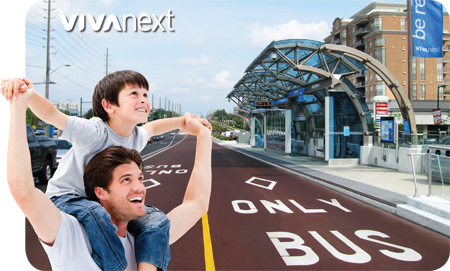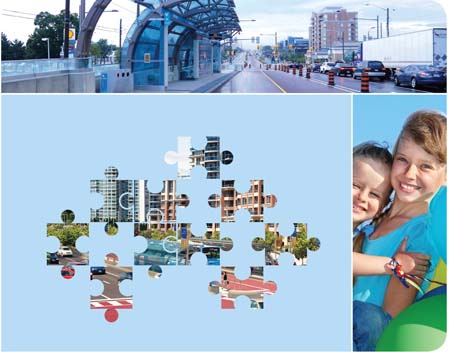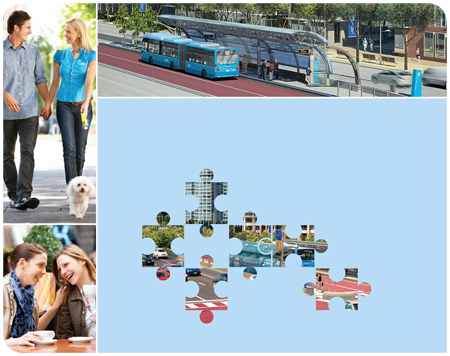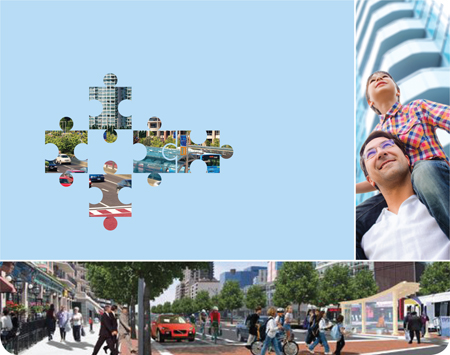When it comes to the future of transit in York Region, you don’t have to look far. The first rapidway along Highway 7 east corridor is now up and running smoothly. With it came wide pedestrian-friendly boulevards, lined with trees and other greenery. The transformation taking place along the Viva routes will change how pedestrians, cyclists and motorists not only view the area in general, but get from A to B more easily, more safely and more efficiently. Check out this 3600 virtual tour for a peak.
This is just the beginning of many miles of rapidway that are under construction or coming soon. Here is an update of what’s happening.
Construction on Highway 7 East continues and crews are working hard from Highway 404 to Warden Avenue to widen the road, build pedestrian boulevards, plant trees and shrubs as well as installing utilities. This next segment of rapidway is expected to be completed in 2014.
Moving along Highway 7 west to Vaughan, you will see the vivaNext rapidway construction starting to take shape between Edgeley Boulevard and Bowes Road. Over the last few months, crews have been working to remove signs, test soil and begin utility relocation to prepare for heavier construction. Throughout the fall and winter, hydro, gas and telecommunications installations and relocations will continue in Vaughan.
Preliminary construction activity will also continue in other parts of Vaughan as vivaNext rapidway construction continues along Highway 7 West. The Vaughan Metropolitan Centre [VMC] station will be completed in time with the Toronto-York Spadina Subway Extension [TYSSE]. Vaughan’s VMC station will be the northernmost subway station, connecting to Viva and a variety of other transit services, for a convenient and seamless experience.
In Newmarket, as you drive or walk along Davis Drive, you’ll see that construction is in full swing and the transformation is starting to take shape. The relocation and replacement of underground infrastructure in some segments on the south side of Davis Drive is complete. In those sections, road widening and preliminary paving has started preparing the roadway for future rapidways.
Also in Newmarket, crews are working to re-locate the Historic Union Hotel and its adjoining building to their final foundations this fall. Extensive culvert work at eastern and western creek is underway. Work continues on the north side of the Keith Bridge. Once completed all this work will help make your travel along Davis Drive smoother and more efficient, especially if you are on transit!
Over the next few years, future rapidways will be added to the Viva routes to better service customers and make travel times shorter by up to 25%. We know construction is messy, but the end results are marvelous!










